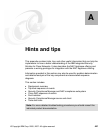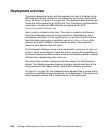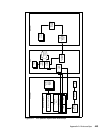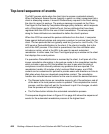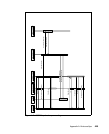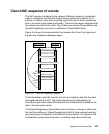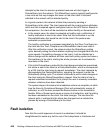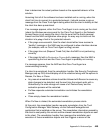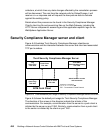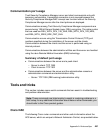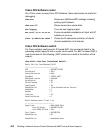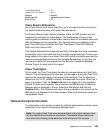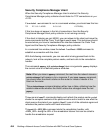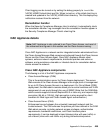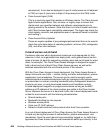Appendix A. Hints and tips 449
then to determine the actual problem based on the expected behavior of the
solution.
Assuming that all of the software has been installed and is running, when the
client first tries to connect to a protected network, it should receive a pop-up
message from the Cisco Trust Agent stating either that the client is healthy or that
the client has been quarantined.
If no message appears, either the Cisco Trust Agent is not running on the client
(check the Windows services panel for the Cisco Trust Agent) or the Network
Access Device is not seeing the client. Also be sure that the host’s personal
firewall and the NAD configuration allow pings. An easy way to check out this
situation is to ping a host in the protected network.
If the pings are successful, then the client should either have received a
“healthy” message or the NAD may be configured to allow clientless devices
(for example, with no Cisco Trust Agent running) access.
If the pings time out (Request Timed Out) then the NAD is not performing
correctly.
If the pings fail with a
Destination Unreachable message, then the NAD is
quarantining the host and the Cisco Trust Agent is probably not running.
If a message appears, then the NAD and the Cisco Trust Agent are
communicating correctly.
If a client is quarantined, then the remediation handler (the Security Compliance
Manager pop-up GUI) should display all of the violations along with the options to
Rescan, Fix Now, or Close:
Any manual remediation actions should be followed with Rescan to cause any
state changes to be detected, and the next time the network polls with a
StatusQuery, the state change will cause a full PostureQuery and the
evaluation process will be restarted.
Fix Now requests automated remediation and initiates the remediation
events.
Close simply closes the remediation handler.
When Fix Now is clicked, the automated remediation process starts.
At this point, the remediation handler requests remediation from the Tivoli
Configuration Manager Web Gateway via the SoftwarePackageServlet
application that is installed on the server. The remediation information passed by
the client is analyzed by this servlet and the relevant remediation objects are sent
to the client. The remediation handler then manages the installation and
execution of these remediation objects and then triggers a rescan of the



